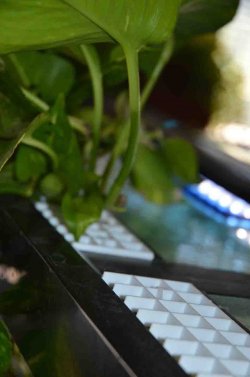From my experience of aquariums in the late 60s, the 70s and 80s, tank lids were always, ALWAYS, considered to be essential, especially for tropical tanks.
Not only did the lid hold the lighting, be it bulbs or fluorescent tubes, but it helped reduce evaporation, minimised fish loss through jumping and, perhaps most importantly, it stopped dust and household airborne contaminants reaching the water surface.
Today, I see this popular trend for open tanks and, whilst I can appreciate the aesthetics of such a tank, I'm wondering about jumping fish and those aforementioned 'airborne contaminants'?
The increased emphasis on plants is, as far as I'm concerned, a Good Thing and I do like those tanks with the plants growing up and out of the water.
I can also appreciate the nice lighting now available and the ability to get that 'different' view of the tank from above...although I suspect that might freak the fish out somewhat, as a potential predator suddenly appears above, casting its predatory shadow.

Another factor with the light would be an actual reduction in the control of the light spectrum entering the tank. With a lid and modern lighting, the majority of the lighting can be controlled, with ambient lighting only entering from the sides left clear. Without a lid, ambient lighting enters from all five sides.
I can also appreciate the visual impact of a clear glass box, with colourful movement inside it, with visible frames and equipment kept to a visual minimum, although, again, I question the effect of such an open arrangement on the well-being of the fish.
Do those of you who have such tanks use a glass cover and, if not, how do you stop your fish jumping ship, minimise evaporation and stop airborne contaminants?




